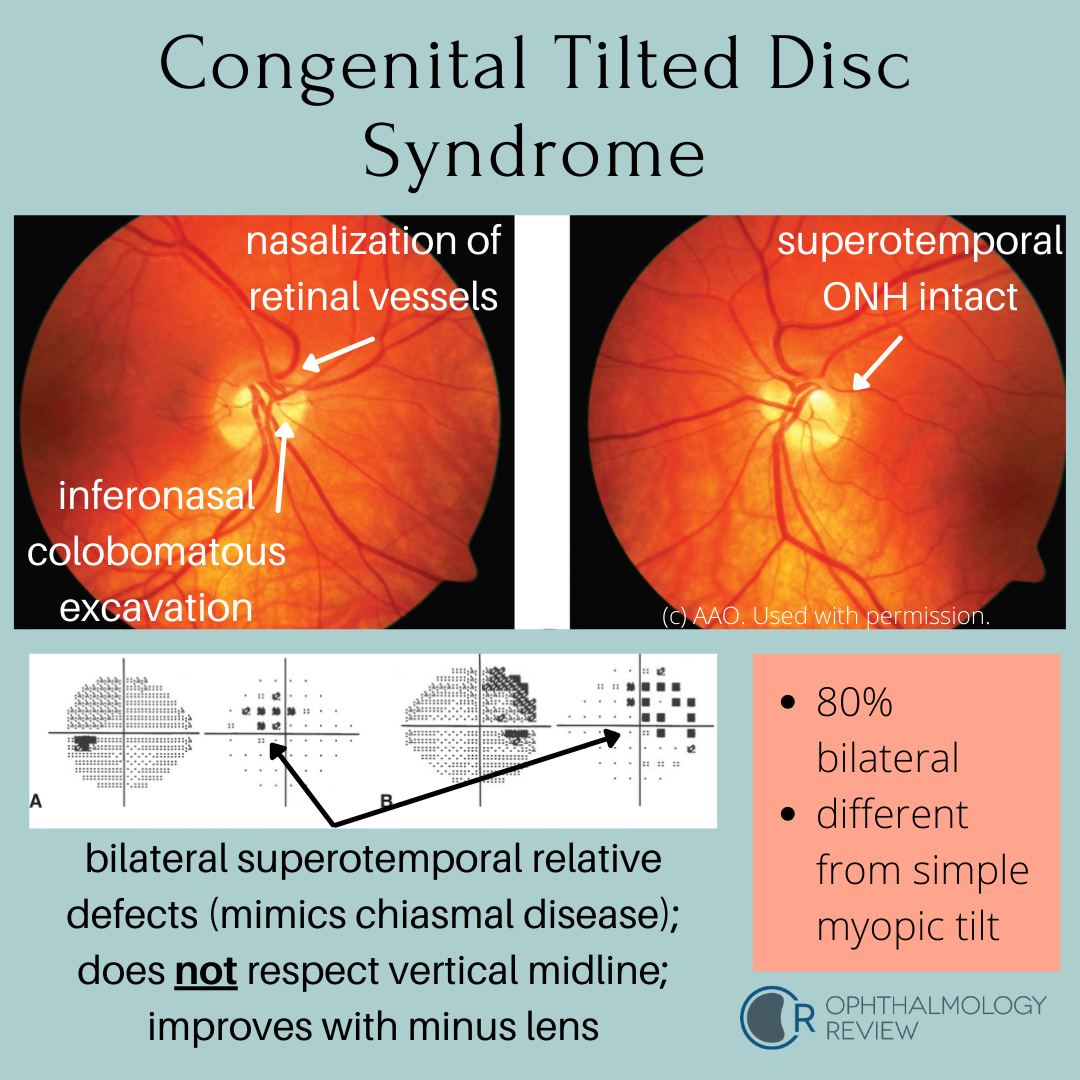This is a condition that can mimic glaucoma due to the temporal excavation and paracentral or arcuate visual field defects. Serous retinal detachments are fairly common in these cases.
Superior Segment Hypoplasia (Topless Disc Syndrome)
This condition may be mistaken for glaucoma due to the inferior arcuate visual field defect and RNFL thinning on OCT. On exam there is no cupping of the optic nerve (usually), and the superior half of the optic nerve is missing or sometimes looks “lopped off,” leading to the name “topless disc syndrome.” The key question that should be asked in the medical history is if the patient’s mother has diabetes mellitus. Unlike glaucoma, this condition does not need treatment.
Morning Glory Disc Anomaly
Like optic pits, morning glory disc anomalies have a risk of serous RDs. Neuroimaging is indicated at initial diagnosis of morning glory disc anomaly to evaluate for basal encephaloceles and CNS vascular anomalies such as moyamoya disease.
Congenital Tilted Disc Syndrome
This condition mimics early bitemporal hemianopia; as such, these patients often get MRIs to look for chiasmal disease. Because these depressions are relative due to refractive error (colobomatous excavation) and not absolute, it’s worth trying different lenses to see if the defects resolve - a compressive lesion such as a pituitary macroadenoma would not improve with different lenses.
Optic Nerve Hypoplasia
Conditions Associated With Congenital Nystagmus: The 4 A's
There are many different eye conditions that are associated with congenital nystagmus; theoretically, any bilateral visually-significant pathology present at birth or in infancy during the critical period of visual development may interfere with the development of stable fixation (1) Eventually I'll get around to discussing the finer points of nystagmus; but for now, I'm sticking to some basic study stuff.
Phakomatoses: Overview
Phakomatoses are a multidisciplinary category of systemic diseases that is often tested for a multitude of reasons. Although the incidence of these conditions is fairly low (though chances are you will see at least 1 case of many of these conditions), there are many ocular findings that need to be considered.
I've been debating how to organize this information in a useful manner for review for quite some time. The subject material is pretty massive, and each condition could easily take several articles (and probably eventually will). But I wanted to make sure there was a useful review out there on this subject before the written board exam, in case the test covers one of these conditions.
Fetal Alcohol Syndrome
In light of the Centers for Disease Control's very broad statements about alcohol use in women, perhaps this topic is somewhat appropriate. Like I alluded to in the OKAP review article on embryology, there are many ocular findings associated with fetal alcohol syndrome, which are important to know, both for clinical recognition, and also for ongoing monitoring. For further reference, the CDC has a pretty useful web portal on fetal alcohol spectrum disorders.
Aniridia
As you can probably tell, I'm starting to skip around a little bit while I put together these OKAP review articles. I have a fairly large list of topics to cover, but hopefully these will all be helpful pieces of information. I decided to skip to aniridia, because it is one of those conditions that seems to be very popular in practice questions.
Causes of Leukocoria: CREAM PIGMENT
There are TONS of causes of leukocoria (white pupil). But this can be a very important differential, as it can be the presenting sign of some sight-threatening and life-threatening conditions (most obviously retinoblastoma). Because of its clinical importance, it is essential to be able to not only recognize what it is, but to also have a decent differential diagnosis so that you don’t miss out on any key causes when conducting a history and physical.






